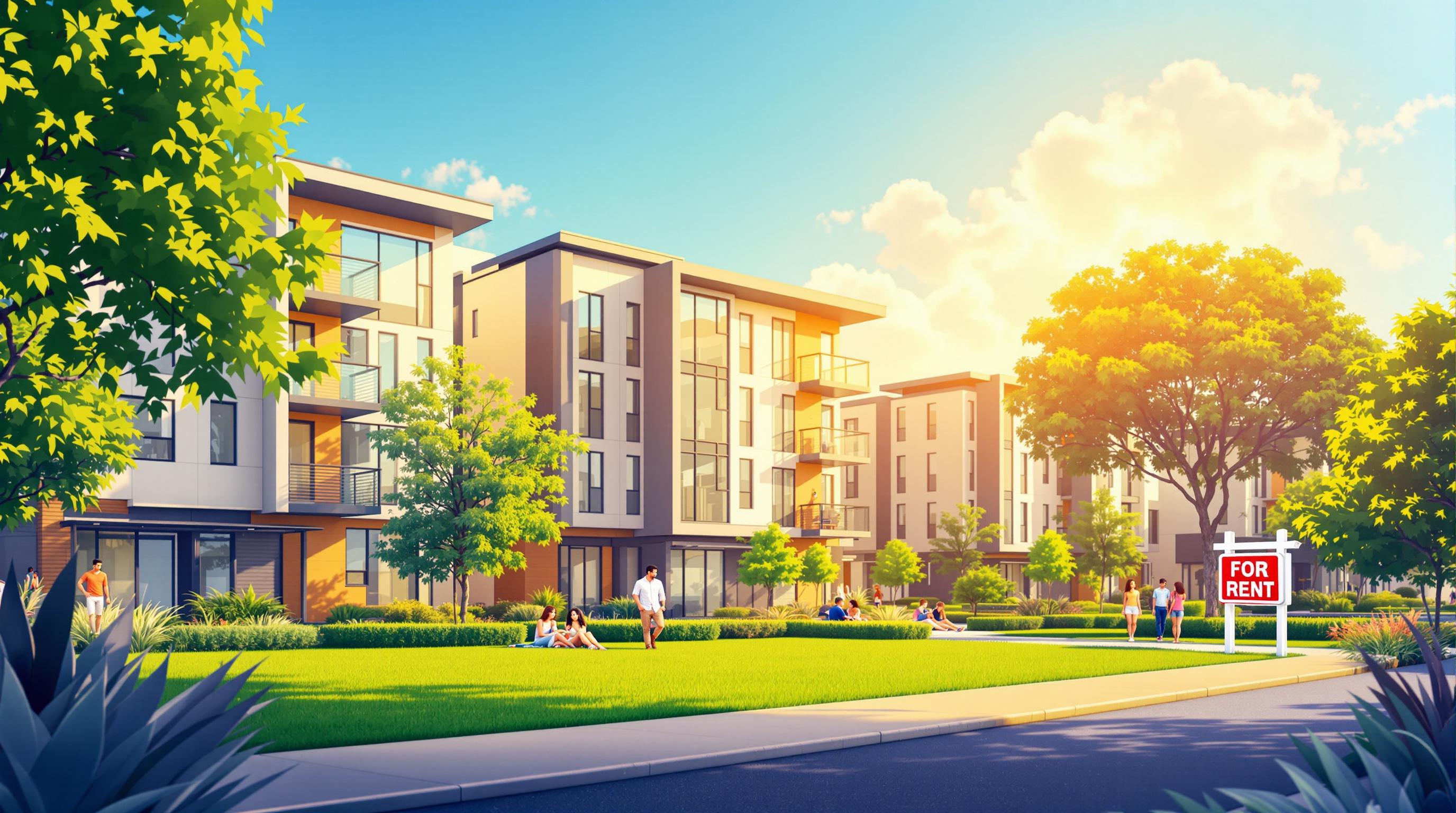Austin‘s rent prices are finally dropping after years of steady increases. Here’s why:
- More Apartments: A surge in new construction has created an oversupply of rental units.
- Higher Vacancy Rates: Vacancies rose from 5.2% in 2023 to 7.8% in 2025, leading to more competition among landlords.
- Slower Population Growth: Fewer people are moving to Austin due to high living costs and remote work options.
- Income and Cost of Living Shifts: Rising expenses and tighter budgets are forcing landlords to lower rents.
- Changing Renter Preferences: Tenants now prioritize larger spaces, better amenities, and value for money.
These trends mean renters have more bargaining power, while landlords are offering discounts and perks to fill vacancies.
Austin renters have more bargaining power due to rent prices …
1. New Apartment Construction Surge
The market is seeing a surge in new apartment construction, creating an oversupply of rental units. With more options available, landlords are lowering prices and offering incentives to attract tenants. This increase in availability has also pushed vacancy rates higher, a trend we’ll explore in the next section.
2. More Empty Units and Market Competition
As Austin experiences a construction surge, rising vacancies are pushing landlords to compete harder for tenants. The city’s rental vacancy rate jumped from 5.2% in 2023 to 7.8% by early 2025, creating a renter-friendly market [2]. This increase is mainly due to an oversupply of new units and slower leasing activity across the metro area [3].
To attract renters, property owners are introducing enticing offers. Many complexes now feature perks like one month of free rent, flexible lease options ranging from 3 to 15 months, and upgraded amenities such as smart home technology and renovated common spaces [4]. Some landlords are even covering moving expenses or lowering security deposits to stand out in this increasingly competitive market [5].
3. Fewer People Moving to Austin
Austin’s rental market is seeing a shift, with fewer people relocating to the city. Higher living costs, the rise of remote work, and more affordable rents in other Texas cities are making Austin less of a go-to destination. Apartments that used to rent out almost immediately are now sitting vacant longer, giving renters more bargaining power when it comes to rent and lease terms. Working with an Austin Local Team specialist can help you take advantage of these changes and find the best lease deals available.
sbb-itb-4c99469
4. Cost of Living and Income Changes
With fewer new arrivals and increased competition, local incomes have shifted, and rising living costs have tightened renters’ budgets. As a result, landlords have responded by lowering rents and offering better deals to attract tenants. The Austin Local Team’s apartment locators specialize in identifying apartments with recent price reductions, helping renters find the best value for their money.
5. Changes in Housing Choices
Renters today are looking for more than just a place to live. They’re prioritizing larger spaces, better amenities, and locations that offer more for their money. This shift in preferences has led to a decline in demand – and rental prices – in areas with an oversupply of traditional units.
Austin Local Team helps renters navigate this market by connecting them with apartments that meet their specific needs for size, features, and budget. It’s a great time for renters to take advantage of these opportunities.
Effects on Property Owners and Tenants
Property owners and tenants in Austin are experiencing a shifting rental market, each with their own set of challenges and opportunities.
For landlords, rising vacancy rates (Factor 2) have led to tighter margins. Many are cutting rents by 5-10% and offering extra move-in perks to attract tenants [6]. At the same time, they face pressure to maintain appealing amenities, often delaying non-essential upgrades to conserve cash flow [7]. Balancing these priorities has become a tricky task.
Tenants, on the other hand, are finding themselves in a stronger position. With an increase in new construction (Factor 1) and slower population growth (Factor 3), renters can negotiate for better terms. It’s not uncommon for tenants to secure monthly discounts of $100-200, reduced deposits, or perks like free parking [8]. This gives renters more leverage to demand improved amenities and longer rent agreements.
That said, some properties are cutting back on maintenance budgets to offset revenue losses. This could lead to lower service levels or unit quality. Savvy renters are taking extra steps, like thoroughly inspecting units and checking maintenance records, before signing a lease [9].
These dynamics highlight the changing landscape of Austin’s rental market and what both landlords and tenants should keep in mind to adapt effectively.
Summary
Austin’s rental market has slowed due to five key factors: increased apartment construction, higher vacancy rates and competition, slower population growth, rising living expenses compared to incomes, and changing renter priorities.
Downtown rents have dropped more significantly than in suburban areas, providing renters with more bargaining power to secure lower rates and better lease terms. Meanwhile, landlords face challenges in maintaining occupancy and revenue.
Austin Local Team assists renters in finding apartments that fit their size, amenities, location, and budget needs. They also help property owners attract qualified tenants by offering up-to-date market insights.
